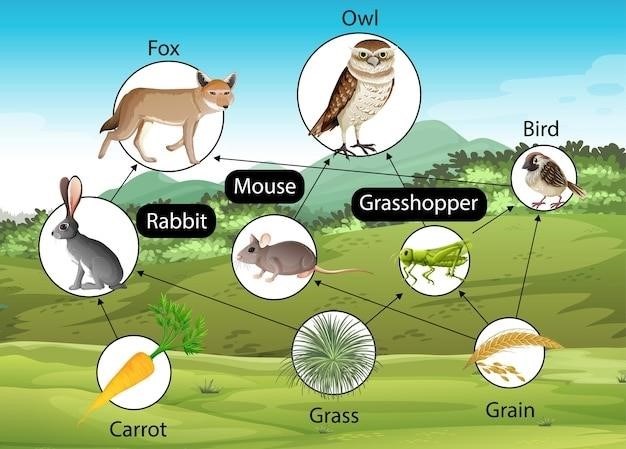Workout PDF⁚ A Comprehensive Guide
Workout PDFs have become increasingly popular as a convenient and effective way to plan and track your fitness journey․ These digital documents offer a structured approach to exercise, providing detailed instructions, exercise variations, and progress tracking tools․ Whether you’re a seasoned gym-goer or a beginner looking to get started, workout PDFs can be a valuable resource for achieving your fitness goals․
Introduction
In the digital age, workout PDFs have emerged as a valuable tool for fitness enthusiasts of all levels․ These downloadable documents provide a structured and convenient way to plan and execute exercise routines, eliminating the need for cumbersome paper notebooks or complicated online fitness trackers․ Workout PDFs offer a comprehensive guide to various workout styles, from full-body routines to targeted muscle-building programs․ They typically include detailed exercise descriptions, illustrations, set and rep recommendations, and even progress tracking sections to monitor your fitness journey․
Benefits of Workout PDFs
Workout PDFs offer a multitude of benefits for fitness enthusiasts, making them a popular choice for both beginners and experienced gym-goers․ One of the key advantages is their convenience․ These downloadable documents can be accessed anytime, anywhere, eliminating the need for bulky fitness magazines or subscriptions to online platforms․ Workout PDFs provide a structured approach to exercise, ensuring a well-rounded routine that targets all major muscle groups․ They often include detailed instructions and illustrations, making it easy to understand and execute each exercise correctly․
Types of Workout PDFs
Workout PDFs come in a variety of formats, catering to different fitness goals and experience levels․ Full body workouts are a popular choice for beginners and those seeking a comprehensive routine․ These PDFs typically include exercises that target all major muscle groups in a single session․ Split workouts, on the other hand, divide the body into different muscle groups, allowing for focused training on specific areas․ This approach is often favored by experienced lifters who aim for greater muscle growth․ Targeted workouts, as the name suggests, focus on specific muscle groups or fitness goals, such as building strength in the legs or improving core stability․ These PDFs provide tailored exercises and routines designed to achieve specific objectives․
Full Body Workouts
Full body workouts are a popular choice for beginners and those seeking a comprehensive routine․ These PDFs typically include exercises that target all major muscle groups in a single session․ They offer a balanced approach to fitness, promoting overall strength and muscle development․ Full body workouts are also time-efficient, as they allow you to train your entire body in a single session․ Many free and paid resources offer full body workout PDFs, catering to different fitness levels and goals․ Some popular examples include 3 Day Full Body Dumbbell Workouts and 8 Week Full Body Workout Plan for Men and Women․ These programs provide structured routines with detailed instructions, making it easy to follow and achieve results․
Split Workouts
Split workouts are designed to target specific muscle groups on different days, allowing for more focused training and better recovery․ These PDFs typically divide the body into upper and lower sections, or into push, pull, and leg categories․ This approach enables you to train each muscle group more intensely, leading to greater gains in strength and hypertrophy․ Popular split workout programs include PPL (Push, Pull, Legs) and Upper/Lower splits․ These plans often include detailed exercise descriptions, sets, reps, and rest periods, providing a structured approach to training․ Split workouts are particularly beneficial for intermediate and advanced lifters who aim to maximize muscle growth and performance․
Targeted Workouts
Targeted workout PDFs focus on specific muscle groups or fitness goals, offering a tailored approach to training․ These PDFs might be dedicated to building strength in your legs, sculpting your shoulders, or enhancing your core stability․ They often include exercises that directly target the desired muscle groups, with variations to challenge different aspects of the muscle․ For example, a targeted leg workout PDF might include squats, lunges, hamstring curls, and calf raises, while a shoulder workout PDF could feature overhead presses, lateral raises, and front raises․ These PDFs allow you to address specific fitness needs and achieve targeted results, making them valuable for individuals seeking to improve specific areas of their physique or performance․
How to Use Workout PDFs
Workout PDFs are designed to guide you through your fitness journey, but using them effectively requires a few key steps․ First, you need to choose the right PDF for your fitness level and goals․ Consider your experience, available equipment, and the specific areas you want to target․ Once you’ve selected a PDF, take time to understand the exercises․ Familiarize yourself with proper form and technique, using videos or illustrations if needed․ This will ensure you’re performing the exercises safely and effectively․ Finally, tracking your progress is crucial for motivation and improvement․ Log your sets, reps, and weights to monitor your strength gains, and adjust your workouts accordingly as you progress․ This data-driven approach will help you stay on track and reach your fitness goals․
Choosing the Right PDF
Selecting the right workout PDF is crucial for maximizing your fitness gains and preventing injuries․ Consider your experience level – are you a beginner, intermediate, or advanced lifter? Factor in the equipment you have access to – do you have a home gym, access to a commercial gym, or are you limited to bodyweight exercises? Think about your goals – are you aiming for strength, hypertrophy (muscle growth), fat loss, or a combination? Once you’ve assessed these factors, search for PDFs that align with your needs․ Look for clear instructions, illustrations, and exercise variations to cater to different fitness levels․ Remember, a well-designed PDF should challenge you while supporting your safe progression․

Understanding the Exercises
Before diving into any workout PDF, ensure you fully comprehend the exercises described․ If you’re unfamiliar with a particular movement, research it online, watch instructional videos, or consult a qualified fitness professional․ Proper form is paramount for maximizing results and preventing injuries․ Pay attention to details such as foot placement, grip, range of motion, and breathing techniques․ If the PDF doesn’t provide clear illustrations or descriptions, seek additional resources to clarify the exercises․ It’s better to be safe than sorry – understanding the exercises thoroughly will enhance your workout experience and help you achieve your fitness objectives․
Tracking Your Progress
Workout PDFs often include sections for tracking your progress, allowing you to monitor your strength gains, endurance improvements, and overall fitness journey․ Use these sections diligently by recording the weights you lift, repetitions completed, and any changes in your workout routine․ This data provides valuable insights into your progress, highlighting areas where you’re excelling and areas where you may need to adjust your approach․ Additionally, tracking your progress can boost your motivation as you witness your accomplishments; Consistency is key, so make a habit of updating your tracking sheet after each workout to maintain a clear picture of your fitness journey․
Popular Workout PDF Resources
The internet is a treasure trove of workout PDF resources, offering a wide range of options for all fitness levels and goals․ From free workout plans to paid programs designed by certified trainers, there’s something for everyone․ Popular websites like MuscleandStrength․com, ThisIsWhyImFit․com, and many others offer free downloadable workout PDFs covering various fitness goals, including full-body workouts, split routines, and targeted muscle training․ Paid programs often provide more comprehensive guidance, including personalized plans, nutrition advice, and progress tracking tools․ When choosing a resource, consider the level of expertise, the content’s focus, and the overall value it offers to determine the best fit for your fitness aspirations․
Free Workout PDFs
The internet is brimming with free workout PDFs, offering a fantastic way to get started with a new fitness routine without breaking the bank․ Websites like MuscleandStrength․com provide a diverse collection of free workout plans, covering full-body routines, split programs, and targeted muscle training․ These resources often include detailed exercise descriptions, sets, reps, and rest periods, making it easy to follow along․ Additionally, platforms like ThisIsWhyImFit․com offer free PDFs for specific workout programs, such as full-body workout plans, 4-1-1 method routines, and 12-week dumbbell programs․ These free resources can be a valuable starting point for individuals seeking to explore different workout styles and discover exercises that align with their fitness goals․
Paid Workout PDFs
While free workout PDFs offer a great starting point, paid options often provide a more personalized and comprehensive approach to fitness․ Paid workout PDFs typically include detailed workout programs designed by certified trainers, incorporating advanced techniques, customized nutrition plans, and progress tracking features․ These resources can cater to specific fitness goals, such as muscle building, weight loss, or endurance training․ Popular platforms like MuscleandStrength․com and ThisIsWhyImFit․com offer a range of paid workout plans, including 8-week arm and shoulder programs, 8-week chest and back routines, and 6-month bodybuilding programs․ These paid resources can be a valuable investment for individuals seeking structured guidance and personalized support in their fitness journey․
Workout PDF Examples
The internet offers a diverse range of workout PDF examples, catering to various fitness levels and goals․ These PDFs can serve as templates for creating your own workout routines or provide ready-to-follow programs․ Popular examples include full-body workout plans, like the “Full Body Workout Plan PDF” from ThisIsWhyImFit․com, which focuses on targeting major muscle groups․ Another example is the “4-1-1 Method Workout Plan PDF” by Lindsey Bomgren, CPT, combining strength training, pilates, and LISS cardio․ For those seeking a structured program, the “12 Week Dumbbell Workout Program PDF” offers a detailed routine for building muscle with dumbbells․ These examples demonstrate the variety and accessibility of workout PDFs, making them a valuable resource for individuals looking to enhance their fitness journey․
Full Body Workout Plan PDF
Full body workout PDFs are designed to target all major muscle groups in a single session․ These plans are often favored by individuals seeking a time-efficient and well-rounded approach to fitness․ The “Full Body Workout Plan PDF” available on ThisIsWhyImFit․com is a prime example, providing a comprehensive routine that addresses legs, shoulders, arms, chest, back, and core․ This PDF outlines exercises for each muscle group, specifying sets, reps, and rest periods․ It also includes detailed descriptions of each exercise, ensuring proper form and technique․ The program emphasizes muscle hypertrophy, aiming for growth and strength gains․ The PDF’s focus on functional movements and compound exercises makes it suitable for beginners and experienced lifters alike․
4-1-1 Method Workout Plan PDF
The 4-1-1 Method Workout Plan PDF, available for free download, offers a unique and engaging approach to fitness․ This 7-day program combines strength training, pilates, and low-intensity steady-state (LISS) cardio, creating a well-rounded weekly workout routine․ It’s designed to be accessible and adaptable, catering to individuals of varying fitness levels․ The 4-1-1 method emphasizes proper form and technique, ensuring efficient muscle activation and injury prevention․ Each day includes a mix of exercises that target different muscle groups, promoting balanced development and overall fitness․ The plan provides a structured framework for achieving fitness goals, with clear instructions and progression guidelines․ This PDF is a valuable resource for those seeking a balanced and effective workout program that incorporates diverse fitness elements․
12 Week Dumbbell Workout Program PDF
The 12 Week Dumbbell Workout Program PDF offers a comprehensive and effective plan for building strength and muscle using only dumbbells․ This program is designed for individuals of all fitness levels, providing a structured approach to progressive overload and muscle hypertrophy․ The PDF includes detailed instructions for each exercise, along with rep ranges and sets for each workout․ It also features a progress tracking template to monitor your results and adjust your training as needed․ Whether you’re looking to tone your physique, improve your overall strength, or simply add variety to your workouts, this program provides a convenient and effective solution․ The 12 Week Dumbbell Workout Program PDF empowers you to achieve your fitness goals from the comfort of your home or gym, using readily available equipment․
Tips for Using Workout PDFs Effectively
To maximize the benefits of workout PDFs, consider these tips⁚

- Set Realistic Goals⁚ Avoid overwhelming yourself with overly ambitious plans․ Start with a program that aligns with your current fitness level and gradually increase the intensity and duration as you progress․
- Stay Consistent⁚ Regularity is key to seeing results․ Aim for consistent workouts as per the PDF’s schedule, ensuring you stick to the program’s guidelines․
- Listen to Your Body⁚ Pay attention to your body’s signals․ If you feel pain or discomfort, adjust your workout accordingly or take a break․ Prioritize recovery and allow your body to adapt to the new training stimulus․
By following these tips, you can optimize your workout PDF experience and achieve your fitness goals effectively․
Setting Realistic Goals
One of the most crucial aspects of using workout PDFs effectively is setting realistic goals․ Avoid getting caught up in the hype of quick fixes or extreme transformations․ Start by assessing your current fitness level and setting achievable targets․ If you’re new to exercise, begin with a program designed for beginners and gradually increase the intensity and duration over time․ Remember, consistency is key, and setting small, manageable goals will help you stay motivated and build momentum on your fitness journey․ Don’t let unrealistic expectations discourage you from making progress․ Celebrate your achievements, no matter how small they may seem․ Focus on consistency and gradual improvement, and you’ll be well on your way to achieving your fitness goals․
Staying Consistent
Consistency is the cornerstone of achieving results with workout PDFs․ While it’s tempting to jump between different programs or skip workouts when motivation dips, sticking to a routine is essential․ Treat your workout sessions like appointments you wouldn’t miss․ Plan them into your schedule and make them a priority․ If you find yourself struggling with consistency, try incorporating workout buddies, setting reminders, or rewarding yourself for sticking to your plan․ Remember, progress doesn’t happen overnight․ It’s the cumulative effect of consistent effort that leads to lasting changes․ Stay committed, stay focused, and reap the rewards of your dedication;





























